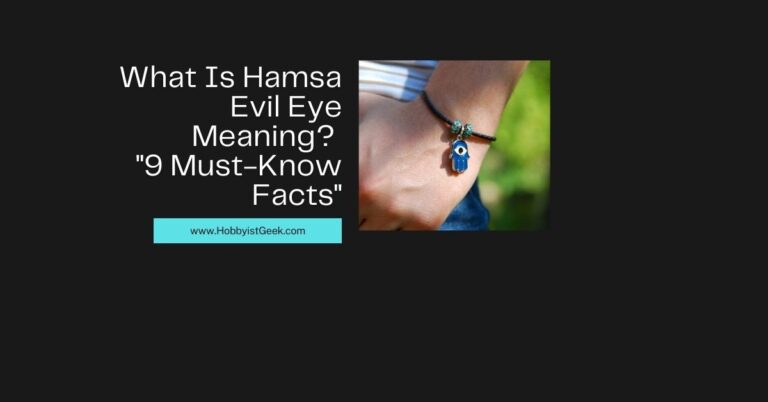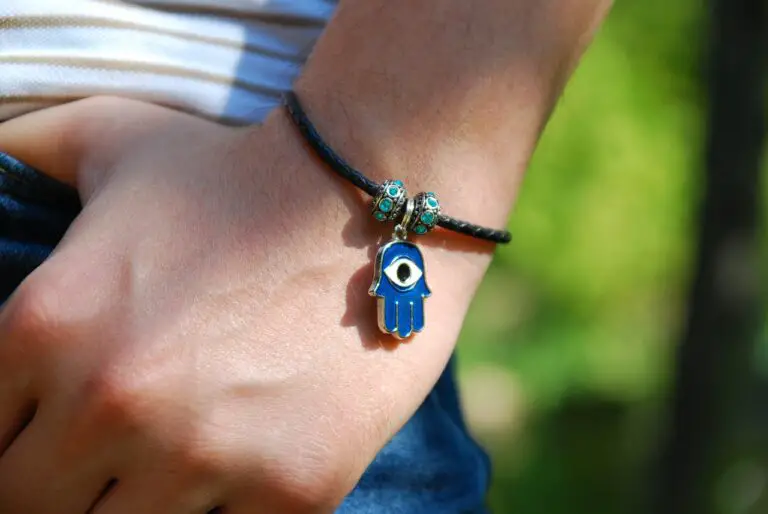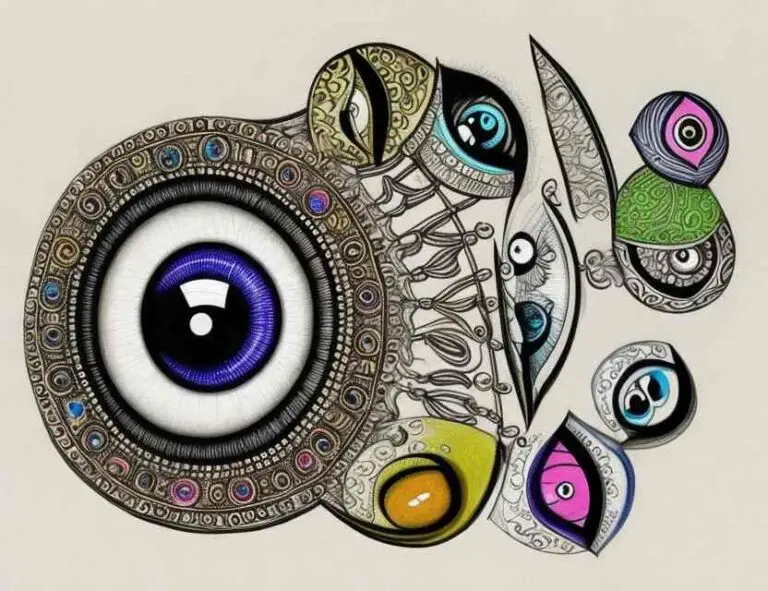Evil Eye History Latin American Countries: Nothing Held Back
Introduction to the Evil Eye in Latin America

A brief explanation of the concept of the Evil Eye
Evil Eye History Latin American Countries Picture this: a glance, innocent to the naked eye, but laden with malevolent energy that can bring misfortune and harm. This is the essence of the ancient belief in the Evil Eye, a concept deeply ingrained in Latin American cultures. The Evil Eye is believed to be an envious or ill-intentioned gaze that can cast a spell of bad luck upon its target.
It is thought to emanate from both intentional and unintentional sources, with its effects ranging from minor inconveniences to serious health issues. The idea behind the Evil Eye revolves around envy and jealousy; those who possess extraordinary beauty, wealth, or success are at greater risk of falling victim to this affliction.
It is believed that individuals who harbor feelings of envy emit negative energy through their eyes, which then latches onto the person they covet. The consequences can be devastating – crops may fail, relationships may crumble, and health may deteriorate.
Importance and prevalence of the Evil Eye belief in Latin American cultures
The belief in the Evil Eye runs deep within Latin American cultures, transcending borders and generations. Passed down through folklore and oral traditions, it has become an integral part of daily life for many communities throughout the region.
Whether it’s Mexico’s “Mal de Ojo,” Brazil’s “mau-olhado,” or Argentina’s “mal ojo,” different countries have their own names for this phenomenon. The prevalence of this belief can be attributed to various factors such as historical influences from indigenous cultures and religious syncretism brought about by colonization.
In addition, Latin Americans tend to place great importance on connections between people and their environment; therefore, any perceived negative energy has significant implications on personal well-being. This belief remains deeply rooted in the collective consciousness, affecting not only individuals’ day-to-day activities but also shaping cultural practices, rituals, and even commercial ventures.
From protective amulets and charms to specialized healers known as curanderos, Latin American communities have developed various ways to combat the Evil Eye and protect themselves from its malevolent effects. Overall, the concept of the Evil Eye is far from being a mere superstition in Latin America; it is a belief system that has stood the test of time due to its deep-rooted significance in daily life and cultural practices.
Understanding its origins, variations across countries, and contemporary interpretations is crucial in appreciating the rich tapestry of beliefs that make up Latin American culture. So let us embark on a journey through history and folklore as we delve into the captivating world of the Evil Eye in Latin America.
Ancient Origins and Influences
Tracing back the origins of the Evil Eye belief in Latin America
The belief in the Evil Eye is deeply rooted in the history of Latin America, dating back to ancient times. Its precise origins are difficult to determine, as they are intertwined with a rich tapestry of cultural influences.
Many scholars suggest that the concept of the Evil Eye was brought to Latin America by Spanish conquistadors during the colonization period. However, others argue that its roots can be traced even further, to indigenous cultures that predate European arrival.
Influence of Indigenous cultures on the Development of this belief System
Indigenous communities played a crucial role in shaping and evolving the belief in the Evil Eye within Latin American societies. These cultures had their own unique interpretations and understandings of malevolent energies and spiritual forces. Practices such as shamanism, divination, and witchcraft were prevalent among indigenous groups across Latin America.
For example, various tribes in Mexico believed that certain individuals possessed innate powers to cast curses through their gaze. These powers were associated with jealousy or ill-intentions towards others.
In Brazil, indigenous tribes attributed similar powers to shamans who could project negative energies through their eyes. As Spanish colonizers arrived in Latin America, their influence merged with existing indigenous beliefs about evil forces.
This fusion led to a syncretism between Catholicism and traditional practices related to warding off or neutralizing evil energies. The result was a unique blend of superstitions and rituals specific to each region within Latin America.
Tracing back the origins of the Evil Eye belief in Latin America is a complex endeavor due to the historical intertwining between Native American beliefs and foreign influences brought by European colonizers. The incorporation of indigenous customs into this concept has given rise to diverse interpretations across different countries within Latin America today.
A Must Watch!… Reaching Across the World: The Hand of Fatima
Cultural Variations across Latin American Countries
In Latin America, the belief in the Evil Eye varies from country to country, each having its own unique cultural practices and remedies. Let’s explore some of these fascinating variations across Mexico, Brazil, and Argentina.
Mexico: Traditional practices and remedies against the Evil Eye
Mexico boasts a rich tapestry of ancient beliefs and customs regarding the Evil Eye. The role of curanderos, revered healers deeply ingrained in Mexican culture, is particularly prominent in combating this malevolent force.
These wise individuals are entrusted with the power to diagnose and treat those affected by the Evil Eye. Furthermore, protective amulets play a crucial role in warding off this negative energy.
One such powerful talisman is the “ojo de venado” (deer’s eye), which consists of a polished stone resembling an eye. It is believed to absorb any harmful gazes directed towards individuals and offer them protection.
Various rituals are also performed to counteract the effects of the Evil Eye in Mexican culture. For instance, “limpias” or spiritual cleansings involve passing an egg or herbs over a person’s body while reciting prayers to extract any negative energy inflicted by the gaze of others.
Brazil: Superstitions surrounding “mau-olhado”
Brazil too has its own colorful superstitions when it comes to warding off what they refer to as “mau-olhado,” meaning evil eye. This belief traces back to ancient African traditions brought during colonial times that merged with indigenous influences and Catholicism. Historically, Brazilians have embraced unique rituals informed by this belief system.
One popular practice involves placing a small mirror under a person’s pillow or bed, reflecting negative energy back to its source. Another common tradition is to tie red ribbons around wrists or ankles, symbolizing protection against the Evil Eye’s harmful influence.
Moreover, a popular Brazilian ritual involves bathing with special herbal mixtures infused with flowers like rosemary and basil. This purifying practice is believed to cleanse the individual of any lingering malevolent gazes and restore spiritual balance.
Argentina: The “Mal de Ojo” phenomenon
The phenomenon known as “Mal de Ojo” holds profound cultural significance in Argentina. This belief permeates various aspects of Argentinean life and is prevalent across different social strata. To counteract the effects of Mal de Ojo, traditional remedies and rituals are deeply entrenched in Argentine culture.
One such remedy involves using raw eggs to absorb negative energy. The egg is rolled over a person’s body while reciting prayers or incantations, believed to draw out the evil forces that have afflicted them.
Additionally, it is customary for Argentinians to wear protective amulets called “mano de Fátima” (Hand of Fatima) or “ojo turco” (Turkish eye). These amulets, often crafted from vibrant blue glass in the shape of an eye or a hand, are believed to ward off the Evil Eye’s detrimental impact by deflecting malicious gazes away from their wearers.
This section highlights the cultural variations across Mexico, Brazil, and Argentina when it comes to combating the Evil Eye. From curanderos and amulets in Mexico to mirror rituals and herbal baths in Brazil, each country offers unique practices steeped in their rich cultures.
The prevalence of Mal de Ojo in Argentina has given rise to traditional remedies involving eggs and protective amulets like Hand of Fatima or Turkish eye. These customs demonstrate the deep-rooted belief in the Evil Eye’s power and the enduring cultural significance it holds in Latin America.
Folklore, Legends, and Mythology
Exploration of Popular Folktales Related to the Evil Eye across Latin America
Latin American folklore is teeming with captivating stories that revolve around the concept of the Evil Eye. From Mexico to Argentina, these tales have been passed down through generations, carrying with them a sense of mystery and caution.
One popular legend hailing from Mexico is that of “La Llorona,” a weeping woman cursed with the Evil Eye who wanders near bodies of water at night, searching for her lost children. Her haunting presence serves as a reminder of the consequences of jealousy and envy.
In Brazil, there’s a famous folktale about a young fisherman named Pedro who unintentionally possessed the power to cast an Evil Eye upon anyone he looked at. This story tells how Pedro struggled to control his newfound ability and ultimately learned valuable lessons about empathy and compassion.
Stories Featuring Characters Afflicted by or Possessing the Power of Evil Eye
Latin American folklore is filled with intriguing characters afflicted by or possessing the power of the Evil Eye. In Mexican folklore, there is “El Chupacabra,” a creature believed to be able to curse animals with its gaze alone.
This mythical beast has become synonymous with tales of livestock mysteriously falling ill or dying under suspicious circumstances. Another well-known character in Latin American legends is “La Ciguapa” from Dominican Republic folklore.
She possesses mesmerizing beauty but also has eyes that can bewitch anyone who gazes into them. These stories serve as cautionary tales about being mindful of one’s intentions and actions.
Moral Lessons Conveyed Through These Tales
These folktales not only entertain but also carry important moral lessons for those who listen closely. As we delve into these stories, we discover universal themes such as the destructive power of envy, the importance of empathy, and the consequences of misusing one’s inherent gifts.
Through these tales, Latin American cultures emphasize the significance of being mindful of our intentions and actions, highlighting the negative repercussions that could arise from harboring jealousy or casting harmful gazes upon others. These cautionary tales encourage individuals to foster positive qualities like kindness, empathy, and generosity.
In a world where superstitions can still hold sway over people’s lives, these stories continue to serve as reminders that our thoughts and intentions have a profound impact not only on ourselves but also on those around us. They teach us to be vigilant in guarding against negativity and to strive for harmony in our relationships with others.
Evolving Perceptions of the Evil Eye in Urban Areas
As Latin American societies have become increasingly urbanized, the perception and understanding of the Evil Eye have undergone significant transformations. In bustling cities, traditional beliefs surrounding this phenomenon have often clashed with modern ideologies. With access to diverse cultures and new ideas through globalization, urban dwellers have begun to question long-held superstitions while forming their own interpretations of the Evil Eye.
While some individuals continue to adhere fervently to traditional beliefs, others view the Evil Eye as nothing more than a relic of the past, dismissing it as mere folklore. This shift in perception can be attributed in part to the influence of scientific advancements and rational thinking that accompany urban living.
The rise of education and access to information has prompted many people to approach the concept of the Evil Eye with a healthy dose of skepticism. However, it is important to note that not all urban dwellers dismiss the existence or significance of the Evil Eye entirely.
Many still retain a level of caution and incorporate various protective practices into their daily lives. This diversity of perspectives creates an intriguing amalgamation of cultural beliefs within city settings, where old traditions intermingle with contemporary thought.
The Impact of Globalization on Traditional Beliefs
The rapid spread of globalization has undeniably influenced traditional beliefs surrounding the Evil Eye throughout Latin America. The increasing interconnectedness among different societies has resulted in a blending and sharing of cultural practices and knowledge.
Consequently, this intermingling has both diluted some aspects and revitalized others. With exposure to alternative worldviews brought forth by globalization, there has been a gradual erosion in certain traditional notions associated with combating or warding off evil energies caused by the Evil Eye.
Younger generations are particularly susceptible to these changes as they assimilate foreign modes of thinking into their own belief systems. However, it is worth noting that globalization has also provided opportunities for the preservation and revitalization of indigenous practices related to the Evil Eye.
The Emergence of Commercialized Solutions for Warding off Evil Energies
Capitalizing on the enduring belief in the Evil Eye, a thriving market for commercialized products claiming to offer protection against its malevolent influence has emerged in Latin America’s urban areas. In response to the growing interest in spirituality and alternative forms of healing, various items such as amulets, talismans, and bracelets have flooded the market. These products are often marketed as powerful tools capable of repelling negative energies associated with the Evil Eye.
Some claim to have been blessed by spiritual leaders or infused with ancient wisdom, appealing to consumers seeking tangible methods of safeguarding against potential harm. While skeptics view these commercialized solutions as nothing more than gimmicks exploiting people’s fears, others find solace and reassurance in such items.
It is important to approach these commercialized solutions with discernment as their effectiveness varies greatly. Understanding that their true power lies not only in mystical properties but also in personal belief provides a balanced perspective on how society engages with contemporary practices concerning the Evil Eye.
Lesser-Known Facts about the Evil

The Power of Intention
One lesser-known aspect of the Evil Eye belief is the emphasis on intention. It is believed that the power of the Evil Eye lies not only in the envious gaze itself but also in the intention behind it.
In Latin American cultures, it is believed that someone can inadvertently cast an evil eye upon another person if they are filled with envy or ill will, even without consciously intending harm. This serves as a reminder to be mindful of our thoughts and emotions and to cultivate positive intentions toward others.
Varying Symptoms
While many people may associate the Evil Eye with a specific set of symptoms, such as headaches or bad luck, it’s interesting to note that symptoms can vary across different cultures and individuals. In Latin American countries, some believe that physical ailments like stomachaches or fatigue can be caused by an evil gaze.
Others might experience emotional distress or sudden misfortunes. The wide range of symptoms associated with the Evil Eye demonstrates its complexity and multifaceted nature within different cultural contexts.
Protective Symbols Beyond Blue
When it comes to protective symbols against the Evil Eye, many may think of blue beads or amulets commonly seen in various cultures. However, there are lesser-known symbols used in Latin America for protection against this malevolent force. For instance, in Mexico, red chili peppers are considered powerful symbols for warding off evil energies.
Likewise, black stones or red ribbons may also be employed for their protective properties in other countries like Brazil and Argentina. These alternative symbols highlight both the diversity and creativity within cultural practices related to guarding against the Evil Eye.
Evil Eye Beliefs Beyond Humans
While most discussions surrounding the Evil Eye focus on humans as both victims and perpetrators of its gaze, there are fascinating beliefs that extend beyond human beings. In some Latin American cultures, it is believed that animals, objects, and even plants can also fall victim to the Evil Eye.
People may take measures to protect their pets, livestock, or crops from this malevolent force by using specific rituals or amulets. These beliefs reflect the profound connection between humans and the natural world in Latin American cultures.
Conclusion
Throughout Latin America, the belief in the Evil Eye has deep roots intertwined with history and folklore. While its influence may vary across countries and regions, one common thread remains the recognition of envy’s potential harm.
However, it is crucial to view these beliefs not only through a lens of fear but also as a testament to the cultural richness and resilience found within Latin American communities. By exploring lesser-known facts about the Evil Eye belief system in Latin America, we gain a greater appreciation for its complexity and diversity.
From understanding the power of intention behind envious gazes to discovering alternative symbols used for protection beyond blue beads, these insights shed light on fascinating aspects often overshadowed by more commonly known information. Ultimately, delving into these lesser-known aspects of the Evil Eye invites us to broaden our horizons and appreciate different cultural perspectives.
It reminds us that despite our differences, there are shared human experiences that connect us all. So let us embrace this knowledge with open minds and hearts full of compassion as we navigate our way through this intriguing world of ancient beliefs.
If you enjoyed reading Evil Eye History Latin America Countries: Nothing Held Back you will love reading Evil Eye History Mediterranean Countries: Nothing Held Back.
Frequently Asked Questions
What is the Evil Eye, and what does it represent in Latin American cultures?
The Evil Eye, known as “mal de ojo” in Spanish, is a belief prevalent in Latin American cultures. It is believed that a jealous or envious gaze can bring about illness and misfortune. It is often considered a form of negative energy transferred from one person to another unintentionally, and it primarily affects babies and young children. Many people wear mal de ojo jewelry and decorate their homes with evil eye symbols for protection. [1][3]
What is the origin of the belief in the Evil Eye in Latin America?
The belief in the Evil Eye, or mal de ojo, has its origins in the Eastern Mediterranean and Greco-Roman traditions. The Spanish colonizers brought this belief to Latin America, where it merged with indigenous and folk healing systems. The Evil Eye is believed to be caused by a strong stare filled with jealousy, envy, or admiration, particularly towards vulnerable individuals like women and children. The concept of the Evil Eye is present in various Latin American cultures. [2][3]
Who is most vulnerable to the Evil Eye in Latin American cultures?
In Latin American cultures, the Evil Eye is believed to primarily affect babies and young children. The Maya people in the Yucatan Peninsula, for example, consider babies and young children to be particularly vulnerable due to their perceived lack of resilience against the negative energy associated with the Evil Eye. The belief is strongest during specific cultural events and rituals. [3]
What are the symptoms and effects of the Evil Eye in Latin American cultures?
The Evil Eye is believed to cause various physical and mental symptoms. Some common symptoms include loss of appetite, excessive yawning, hiccups, vomiting, fever, insomnia, fatigue, depression, and diarrhea. It is thought to bring about negative effects on a person’s well-being, luck, and prosperity. The belief in the Evil Eye extends beyond individuals to objects and even buildings, which may suffer deterioration or misfortune as a result. [5][7]
How can one protect themselves from the Evil Eye in Latin American cultures?
There are various protective practices against the Evil Eye in Latin American cultures. These include wearing mal de ojo jewelry, using evil eye home decor, performing cleansing rituals, and seeking the help of spiritual healers or curanderos. These practices aim to ward off negative energy and provide protection against the effects of the Evil Eye. [1][3]
Resources for the article Evil Eye History Latin America Countries
- Evil eye – Wikipedia: [1]
- Evil eye | Protection, Superstition & Beliefs – Britannica: [2]
- Mal de Ojo: The Power of the Evil Eye in Latin America and Other Cultures – A Little Bit Human: [3]
- What Each Culture and Country Believe About The Evil Eye – Svana Design: [4]
- Variation and Persistence in Latin American Beliefs About Evil Eye – Sage Journals: [5]
- Evil Eye Hand: Unveiling the Mystical Origins and Meanings - February 2, 2024
- Amegreen Amethyst Meaning: Discover the Hidden Magic! - February 2, 2024
- Is The Evil Eye Bad?: A Deep Dive into Evil Eye Taboos - February 2, 2024









